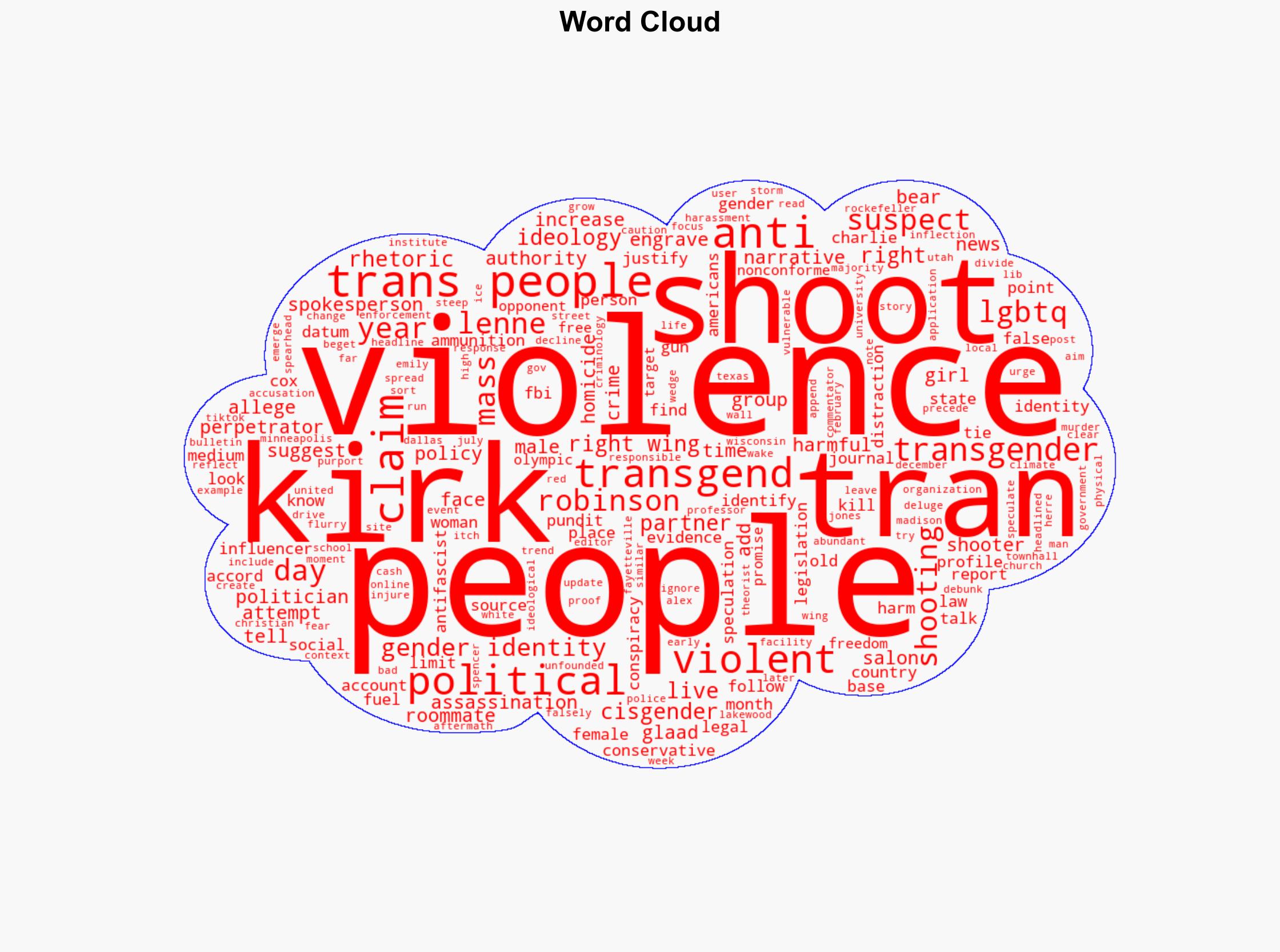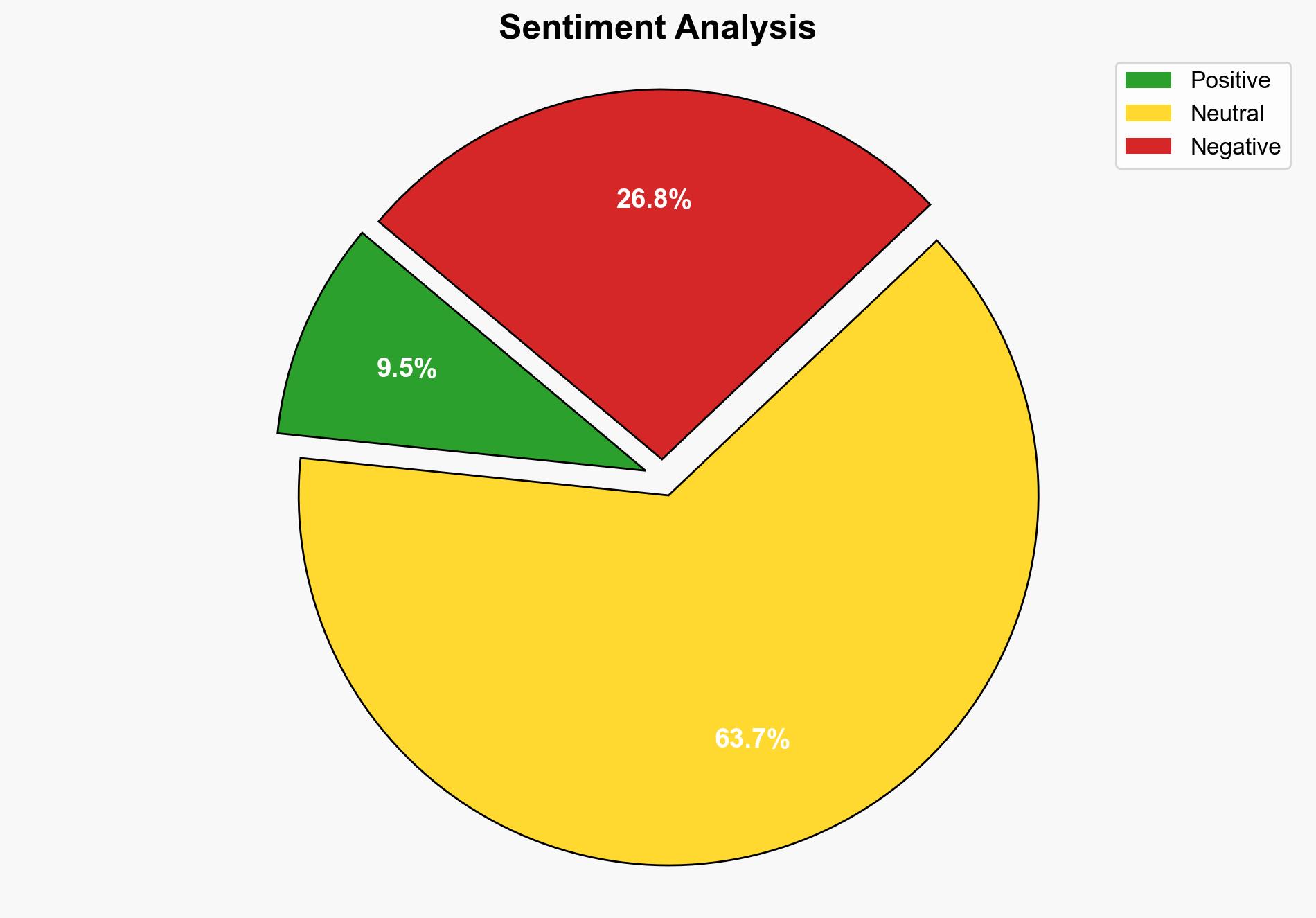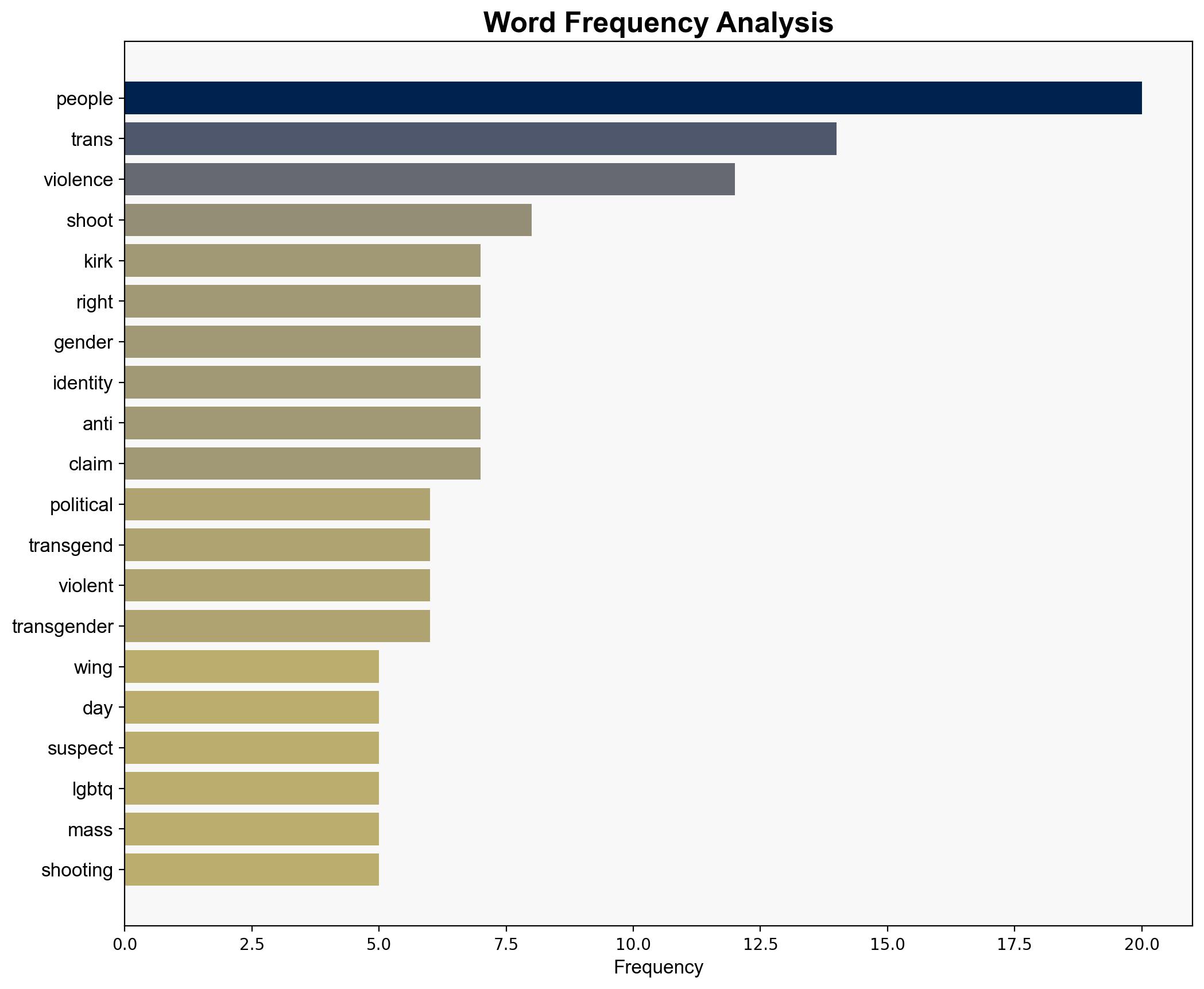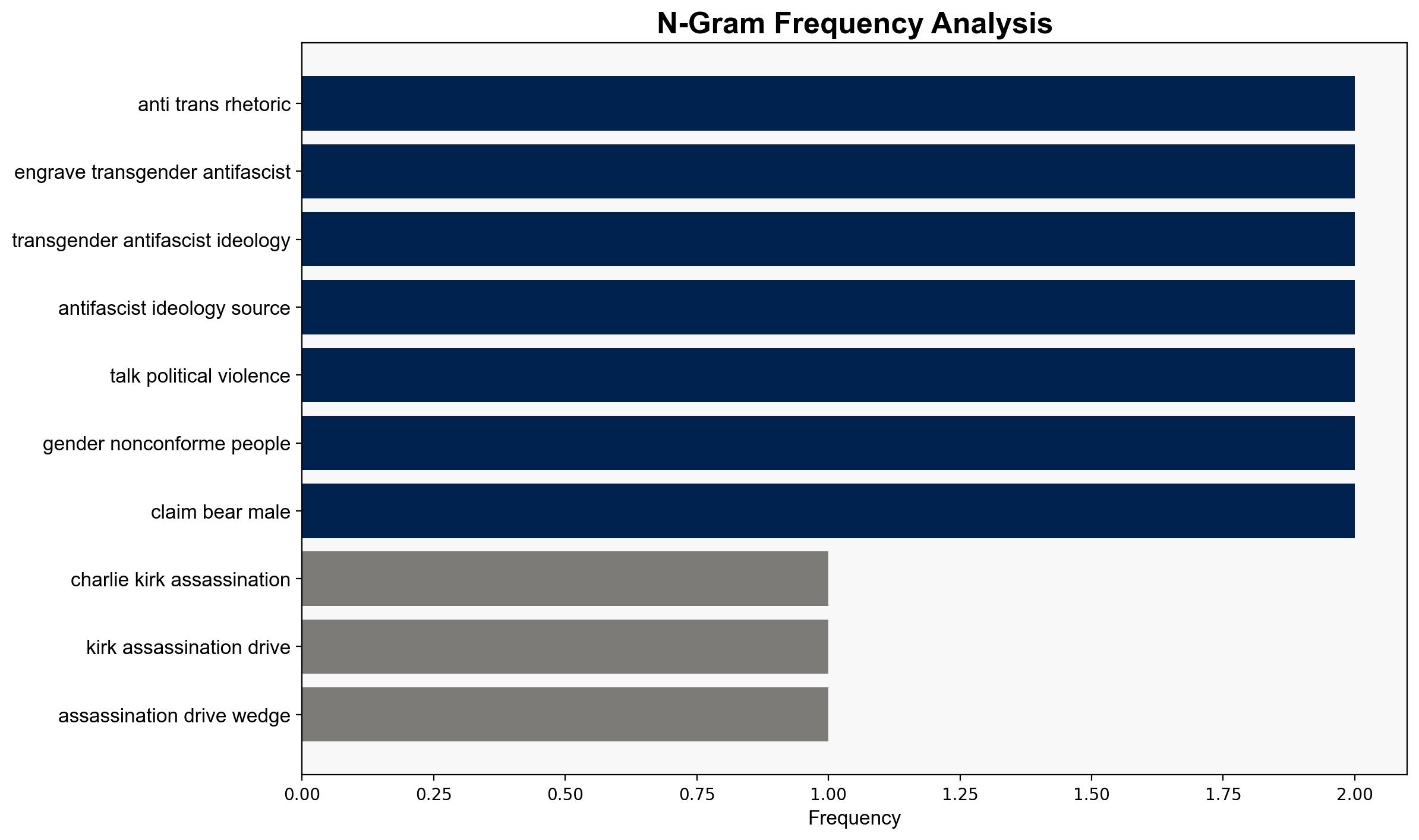Political violence has nothing to do with gender identity – Salon
Published on: 2025-10-01
Intelligence Report: Political violence has nothing to do with gender identity – Salon
1. BLUF (Bottom Line Up Front)
The analysis suggests that the narrative linking political violence to gender identity is largely unfounded and may be a strategic distraction. The most supported hypothesis is that political violence is being misattributed to gender identity issues to serve broader ideological agendas. Confidence level: Moderate. Recommended action: Focus on addressing the root causes of political violence and countering misinformation campaigns.
2. Competing Hypotheses
1. **Hypothesis A**: Political violence is being inaccurately linked to gender identity issues as a means to further polarize public opinion and distract from the actual causes of violence, such as ideological extremism and political rhetoric.
2. **Hypothesis B**: There is a genuine correlation between gender identity and political violence, driven by societal tensions and the increasing visibility of transgender individuals in public discourse.
Using the Analysis of Competing Hypotheses (ACH) 2.0, Hypothesis A is better supported due to the lack of concrete evidence linking gender identity to specific acts of political violence, as well as the presence of misinformation and speculative narratives.
3. Key Assumptions and Red Flags
– **Assumptions**: Hypothesis A assumes that political violence is primarily driven by ideological extremism rather than gender identity. Hypothesis B assumes a direct link between gender identity and acts of violence.
– **Red Flags**: The reliance on anecdotal evidence and speculative narratives in media reports. The potential for cognitive bias in attributing violence to gender identity without substantial evidence.
– **Inconsistent Data**: Contradictory reports about the gender identity of perpetrators and the motives behind their actions.
4. Implications and Strategic Risks
– **Patterns**: The use of gender identity as a scapegoat in political violence narratives may increase societal division and distract from addressing the true causes of violence.
– **Cascading Threats**: Misinformation could lead to increased stigmatization and violence against transgender individuals.
– **Potential Escalation**: If left unchecked, the narrative could exacerbate existing political divides and fuel further violence.
5. Recommendations and Outlook
- Enhance monitoring and counter-misinformation efforts to prevent the spread of unfounded narratives linking gender identity to violence.
- Engage in community outreach to address the root causes of political violence, focusing on ideological extremism and divisive rhetoric.
- Scenario Projections:
- Best Case: Reduction in misinformation leads to a decrease in violence and societal tensions.
- Worst Case: Continued misinformation exacerbates violence and societal division.
- Most Likely: Ongoing efforts to counter misinformation result in gradual improvement in public discourse.
6. Key Individuals and Entities
– Charlie Kirk
– Emily Lenne
– Tyler Robinson
– Spencer Cox
7. Thematic Tags
national security threats, misinformation, political violence, societal division





